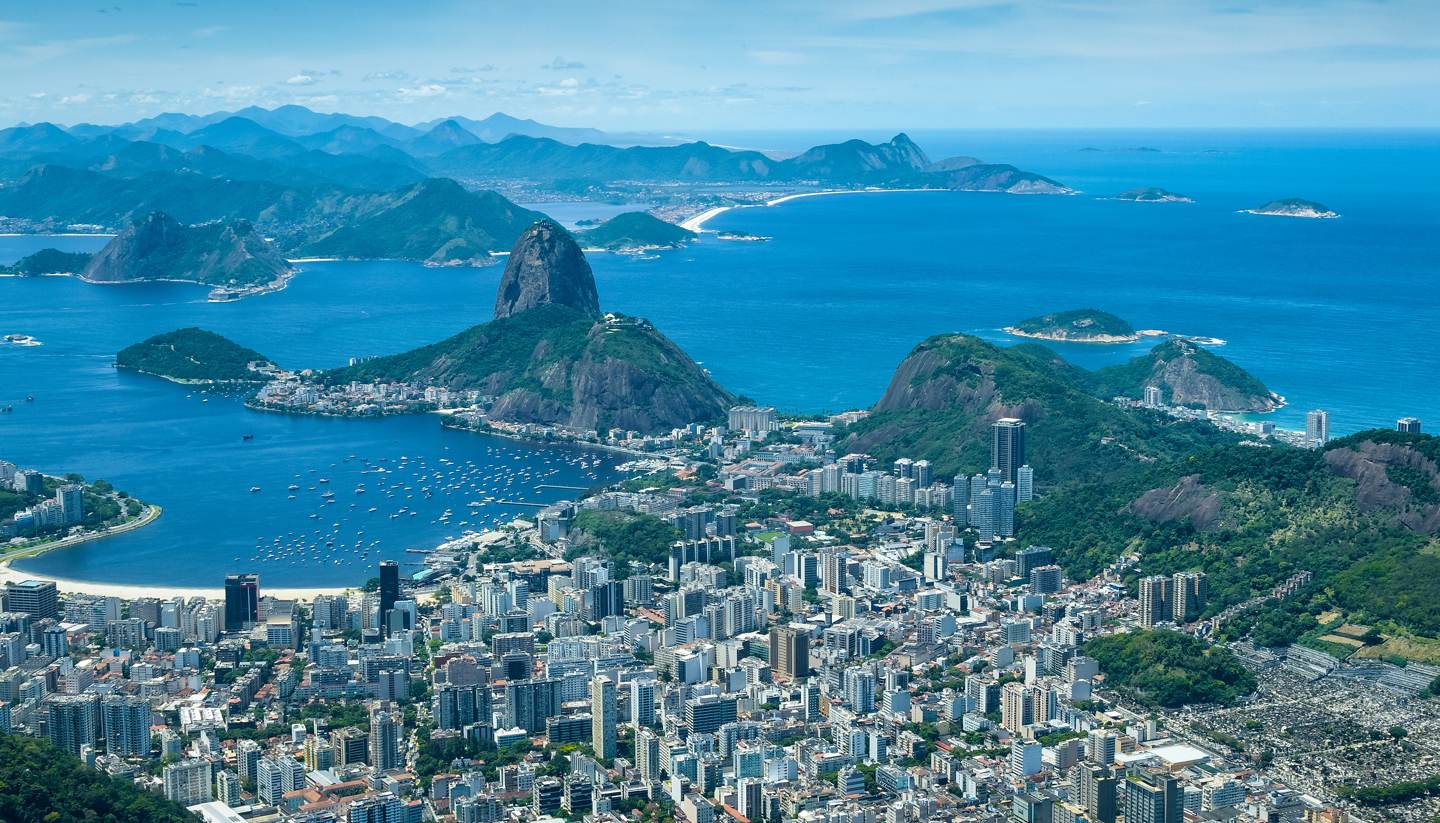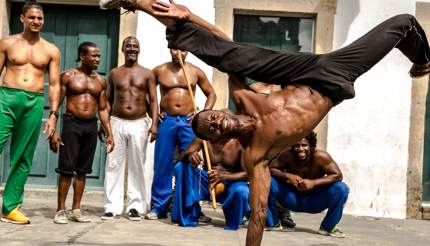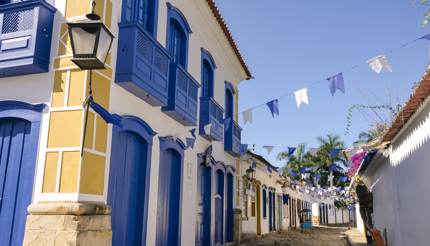Vibrant, exciting and dazzling are words synonymous with Rio de Janeiro, one of the world’s favourite party cities
With white sandy beaches hugging Guanabara Bay and part of the city designated as a UNESCO World Heritage Site, tourists flocking to Rio de Janeiro are in for a good time. Join the locals (Cariocas) and share their three obsessions: the beach, football and Carnival. And, if you want to get away from the crowds, leafy suburbs such as Santa Teresa offers bohemian cafés and art galleries, or take a cruise and visit one of the paradise islands that lie just offshore.
When to go
Summer (December to February) – is hot and wet, with temperatures reaching 40C and when locals hit the beach. Millions of tourists also descend in January or February for the annual Carnival.
Autumn (March to May) – is humid but temperatures rapidly decline into the upper 20s. Plan your trip to coincide with Dia do Indio (Indian Day) on April 19 which has a series of events honouring the nation’s indigenous peoples.
Winter (June to August) – is mild and pleasant, with temperatures rarely going below 17C. Rainfall is also minimal, making it an ideal time to visit Rio and experience this awe-inspiring city.
Spring (September to November) – is warm and dry, with temperatures averaging out at 26C. The lack of humidity makes visiting Rio during these months pleasant and enjoyable.
Getting around
Yellow and blue striped taxies are plentiful, reliable and you can simply hail one on the street. There are two tariffs which you should be aware of: Tariff one runs Monday to Saturday 0600 to 2100, while tariff two runs Monday to Saturday from 2100 to 0600 and all day on Sunday. For information on public transport and car and bicycle hire check out Getting around Rio de Janeiro page.
Must see attractions
Corcovado and Cristo Redentor
The statue of Christ the Redeemer looking benignly over Rio atop Corcovado Mountain is the most iconic sight in the city, visible from every corner. The best way to get there is with the cog railway and then the 220 steep steps leading to the summit. If stairs aren’t your thing, there are lifts and escalators available.
Copacabana and Ipanema
These two areas are Rio’s most famous beaches that arc around the bay. Copacabana is a vibrant and energetic neighbourhood, with the seafront acting as the epicentre of Brazil’s renowned lively atmosphere. Adjacent to Copacabana, Ipanema boasts wide flat sands which draw beach lovers while its chic boutiques and glamorous bars attract wealthy hip crowds. The Feira Hippie craft market on Sundays is not to be missed.
Centro (Center)
Old and new come together in Rio’s historic downtown district where modern skyscrapers rub shoulders with history buildings. Centro is home to two prominent museums – the National Museum of Fine Arts and the National Historical Museums, as well as Mosteiro de São Bento, a sumptuously gilded church and Benedictine monastery.
For more must-see attractions in Rio, visit the Things to see in Rio de Janeiro page.
Quirky & offbeat
Learn Capoeira
Capoeira is a form of martial art that blends athleticism, grace and music. There are many schools in Rio offering courses and teaching you some quick and complex manoeuvres.
Join the surfing revolution
The Zona Sul coastline is synonymous with surfing, with many people taking full advantage of the early morning big waves. Head to Ipanema Beach to rent a board or to take a few lessons with a surf school.
For more ideas visit the Things to do in Rio de Janeiro page.
Travel tips
Must-try specialties
- Feijoada – beef, pork and black beans are cooked over low heat in a thick clay pot to make this rich stew. Many restaurants in Rio serve it on Fridays.
- Vatapá – a creamy sauce made of fish oil, coconut milk and manioc paste with shrimps and chicken, served with rice.
- Pão de queijo – crispy on the outside, soft on the inside, these cheesy dough balls are simply delicious.
- Açaí – long before it became a superfood known worldwide, locals were already snacking on Açaí sorbet.
- Cachaça – a spirit made from sugarcane, cachaça is the most popular spirit in Brazil.
Tipping: 10% is standard for most services not included on the bill.
Hotels in Rio de Janeiro
Rio de Janeiro has an impressive array of hotel options, from luxury hotels on the Copacabana and Ipanema beachfronts to more affordable options further back from the coast. The Copacabana Palace, set in an elegant classical building, has hosted famous guests like Robert De Niro, Orson Welles and Princess Diana. For something inexpensive, the budget San Marco Hotel, only two blocks away from Ipanema beach, is a wise choice. For more hotel recommendations, see the Rio de Janeiro Hotels page.
Nightlife in Rio de Janeiro
When the sun goes down, Rio comes alive with people congregating at the many bars and clubs in the city. Jobi, with its cheap beer and lively atmosphere, is a local favourite, while Circo Voador sees some of Brazil’s top acts perform as people strut their stuff on the massive sunken dance floor. For something a bit more traditional, visit Theatro Municipal, one of Brazil’s most significant theatres, for a selection of contemporary and classical productions. Take a look at our Rio de Janeiro Nightlife page for more great places to head on your night out.
Excursions from Rio de Janeiro
A UNESCO World Heritage Site, Paraty is a town frozen in time. Its well-preserved architecture, dating from between the 17th and the 18th centuries, showcases the town’s rich history as a major coffee and gold port. Only a three-hour drive away from Rio, Paraty is a gorgeous addition to your trip. For more excursion inspiration, check out the Rio de Janeiro tours and excursions.
Visa requirements to Rio de Janeiro, Brazil
Australian, Canadian and American citizens need a visa to enter Brazil. On the other hand, British and other EU nationals do not. All passports must be valid for at least six months from the date of entry into Brazil. To find out more, take a look at the Brazil Visa and Passport Requirements page.










